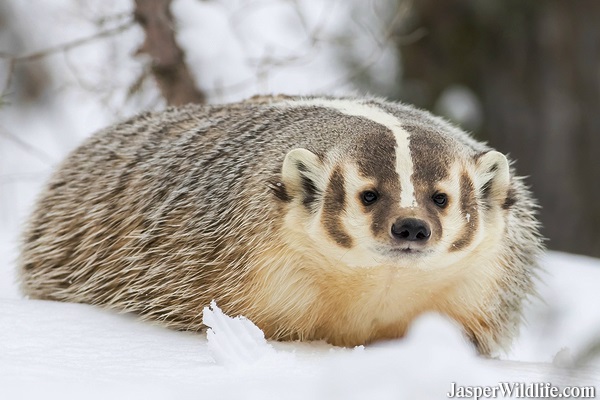(Taxidea taxus) BADGER
Size of Jasper Alberta's Badger
Mass: 4 - 12 kgLength: to 30 in. (76 cm.) Where do Badgers Live?
Temperate forest & rainforest, temperate grassland, chaparral, desert (Badgers are found principly in dry, open country.)
Status: no special status.
Range: The badger is found primarily in the great plains region of North America. The species has expanded its range greatly since the turn of the century, and it is now found as far east as Ontario, Canada. Details of Jasper's Badger
Badgers measure 520-875mm from head to tail, with the tail making up only 100-155 mm of this length. The body is flattened, and the legs are short and stocky. The fur on the back and flanks of the animal ranges from grayish to reddish. The ventrum is a buffy color. The face of the badger is distinct. The throat and chin are whitish, and the face has black patches. A white dorsal stripe extends back over the head from the nose. In northern populations, this stripe ends near the shoulders. In southern populations, however, it continues over the back to the rump. Badgers are solitary animals. Typical population density is about 5 animals per square kilometer. Males occupy larger home ranges than females (2.4 versus 1.6 square kilometers), but this species is not known to defend an exclusive territory. Badgers are mainly active at night, and tend to be inactive during the winter months.
The badger is an excellent digging machine. Their burrows are constructed mainly in the pursuit of prey, but they are also used for sleeping. A typical badger den may be as far a 3 meters below the surface, contain about 10 meters of tunnels, and have an enlarged chamber for sleeping. Badgers use multiple burrows within thier home range, and they may not use the same burrow more than once a month.
Tracks are 2 - 3 in. (5 - 8 cm.) long. Claw marks are more evident on the fore paw tracks.

Badger Tracks


